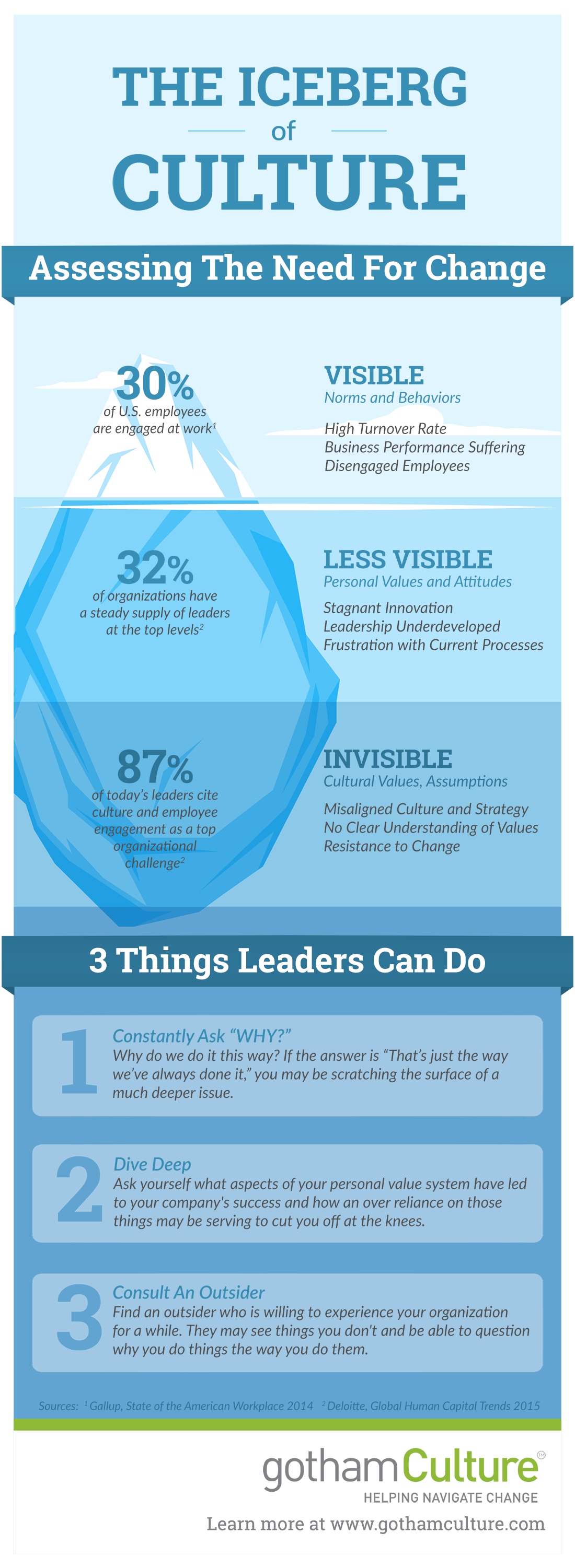The rising awareness of the importance of organizational culture has given way to a host of new pundits and opinions on the topic.
Many thought leaders today are talking about company culture as if it’s akin to capturing a unicorn. It carries a romantic and mythological appeal that makes it an irresistible topic of conversation, but they still haven’t fully figured out how to effectively shape it to drive the right behaviors in their organizations.
Unfortunately, a lack of rigor in process as well as a lack of real-world experience makes it challenging at best for them to really help businesses understand and harness the power of their cultures. And as a result, when it comes to measuring bottom-line performance metrics like profitability, sales growth and market share as they relate to culture, they have yet to connect the dots between fact and fiction.
With that in mind, here are 5 common myths about organizational culture, debunked:
Myth #1: “We can’t manage what we can’t measure.“
The term “culture” is in and of itself pretty tough for people to wrap their heads around in a consistent and meaningful way. Culture can cover any number of aspects of organizational functioning. It evolves constantly based on what seems to be working in the current business context and it subconsciously influences people to behave in certain ways. Often, employees are not even aware of how it’s affecting their everyday work.
How can we hope to manage something we find difficult to even define?
There are a lot of aspects of culture that are all playing a role in shaping employees thoughts and behaviors in the day-to-day, but only some of those have been studied rigorously and have been found to be directly linked to performance.
If you’re working to understand your current culture and how it may be impacting the performance of your business, start with the aspects of culture that are linked to empirical research; not just someone else’s opinion.
Myth #2: “Culture takes years to change.”
This is not wholly untrue. It does take a long time for collective norms and ways of working to develop and, through success, become more entrenched in the collective mindset as the right way to do things. The longer that “way of doing things” reigns supreme (and the longer that way meets with successful results) the harder it is to change it.
That said, culture can change quickly. It usually takes a “gut punch” to the organization that clearly shows everyone that the old ways of doing things that had yielded success for many years are no longer going to cut it in today’s business environment.
Myth #3: “Culture is a silver bullet that will take away all of our problems.”
Business today is extremely dynamic, involving more and more stakeholders who demand greater amounts of input and control than ever before. Trying to find a silver bullet solution to these kinds of complex issues is akin to spotting a unicorn ordering a double macchiato at your local Starbucks.
Culture is inherently a multi-faceted concept and, thus, there is no single solution that’s going to align everyone in your organization to reach your goals. Typically, true culture transformation requires a multi-pronged approach to achieve the results you require. For example, clarifying and aligning stakeholders about the strategy, providing tools and skills so people can do what you are asking of them and adapting systems and processes to improve work flow might all be potential intervention efforts to get things moving in the right direction.
Myth #4: “It’s HR’s job to worry about stuff like this.”
While HR can, and often does, play a critical role in the culture assessment and evolution process in many organizations, one fatal pitfall is when executives extend that role to include ownership of the entire process.
Culture is a collective concept and, as such, should be owned by the collective. Everyone in your organization needs to be involved in both understanding what aspects of the culture will help drive success and which may need to change in order to keep the organization relevant in changing business environments. This is everyone’s job. Leaders cannot simply delegate responsibility for leading these types of changes.
Myth #5: “We can do this internally.”
In other words, you and your team were involved in creating the culture, so it’s up to you to fix it. Yes and no.
In many instances, organizations find it difficult to assess and evolve their own culture because so much of it resides in the collective subconscious and is taken for granted in the day-to-day. Because of this, it is often much more beneficial to engage with a team of external experts who can examine your organization with fresh and unbiased eyes.
This gives you the ability to dig much deeper into the beliefs and assumptions that are driving behavior than you could ever hope to get to on your own. External experts also bring proven methodologies and structure to the process that helps to expedite your efforts.
Additionally, in many organizations people don’t always feel comfortable opening up to internal colleagues in the same way they might with an external person. An objective third party can help facilitate a more honest assessment of current assumptions and behaviors.
So, while culture may not be the silver bullet you may have thought it was, or the unicorn that will magically solve your organization’s performance problems, it is still too important for your organization to ignore.
And now that you know the truth, it’s up to you, as a leader, to help your organization succeed. How will you take the first step to create a high performance culture in your organization?





 Mark Emerson, General Manager
Mark Emerson, General Manager Arthur Kim, Engagement Manager
Arthur Kim, Engagement Manager Pamela Farago, OD Intern
Pamela Farago, OD Intern Chelsea Weber, OD Intern
Chelsea Weber, OD Intern






